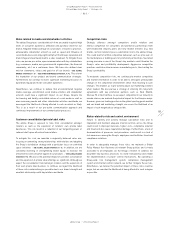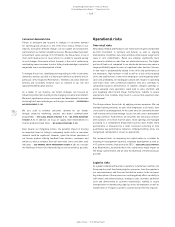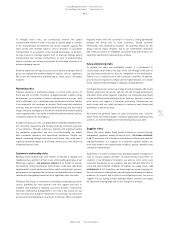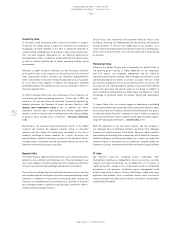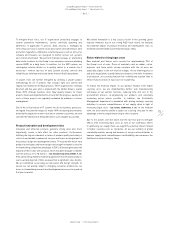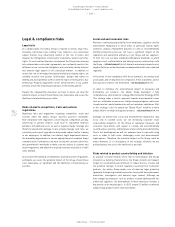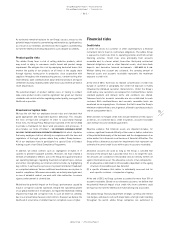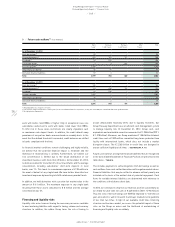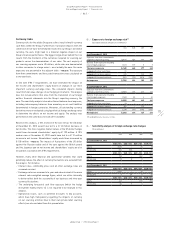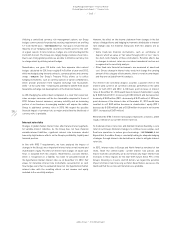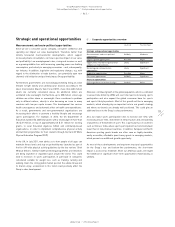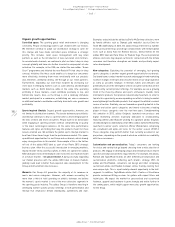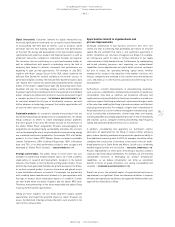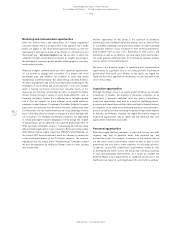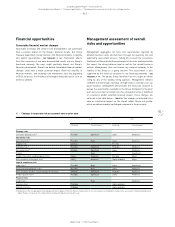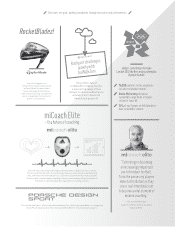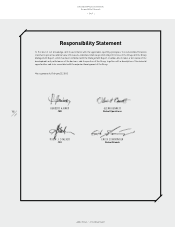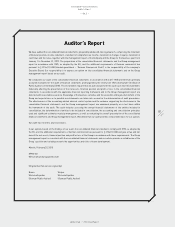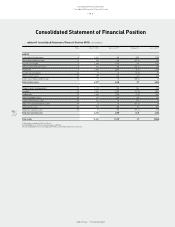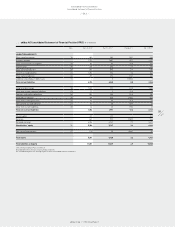Reebok 2012 Annual Report Download - page 201
Download and view the complete annual report
Please find page 201 of the 2012 Reebok annual report below. You can navigate through the pages in the report by either clicking on the pages listed below, or by using the keyword search tool below to find specific information within the annual report.
adidas Group
/
2012 Annual Report
Group Management Report – Financial Review
179
2012
/
03.5
/
Risk and Opportunity Report
/
Strategic and operational opportunities
Strategic and operational opportunities
Macroeconomic and socio-political opportunities
Since we are a consumer goods company, consumer confidence and
spending can impact our sales development. Therefore, better than
initially forecasted macroeconomic developments, which support
increased private consumption, can have a positive impact on our sales
and profitability. Low unemployment rates, rising real incomes as well
as a growing middle class with increasing spending power are fuelling
consumption, particularly in emerging economies – and, subsequently,
our industry. In addition, legislative and regulatory changes, e.g. with
regard to the elimination of trade barriers, can potentially open new
channels of distribution and positively impact Group profitability.
Furthermore, governments are increasingly promoting living an active
lifestyle to fight obesity and cardiovascular disease. According to the
latest International Obesity Task Force (IOTF), more than 600 million
adults are currently considered obese. An additional billion are
estimated to be overweight. Furthermore, up to 200 million school-age
children are either obese or overweight. Once considered a problem
only in affluent nations, obesity is also becoming an issue in many
countries with low per capita income. This development has serious
health consequences and a dramatic effect on health care expenditures.
As a result, governments and non-governmental organisations are
increasing their efforts to promote a healthy lifestyle and encourage
sports participation. For example, in 2012, the US Department of
Education awarded 56 additional grants with a total budget of more than
US $ 27 million, on top of approximately US $ 51 million for existing
grants, to Local Education Agencies (LEAs) and community-based
organisations, in order to implement comprehensive physical activity
and nutrition programmes for their students through the Carol M. White
Physical Education Program (PEP).
In the UK, in July 2011, new advice as to how people of all ages can
maintain fitness levels and stay or get healthy was launched as part of
the first UK-wide physical activity guidelines by the four nations’ Chief
Medical Officers. Similar health-promoting programmes and initiatives
are being launched or expanded upon around the world. This could
lead to increases in sports participation, in particular in categories
considered suitable for weight loss, such as training, running and
walking. Given the strong global market position the adidas Group and
its brands enjoy, acceleration in this trend could positively affect the
Group’s sales development.
07
/
Corporate opportunities overview
Likelihood Potential impact
Strategic and operational opportunities
Macroeconomic and socio-political
opportunities
Unlikely Moderate
Organic growth opportunities Possible Major
Opportunities related to organisational
and process improvements
Likely Significant
Marketing and communication
opportunities
Likely Significant
Acquisition opportunities Possible Minor
Personnel opportunities Unlikely Significant
Financial opportunities
Favourable financial market changes Unlikely Major
Moreover, continued growth in the global population, which is estimated
to exceed nine billion by 2050, will over time lead to increasing sports
participation and also expand the global consumer base for sports
and sports lifestyle products. Most of this growth will be in emerging
markets, which already play an important role in our growth strategy
and where our brands are already well positioned. This could give an
additional boost to the Group’s sales performance.
Also, we expect sports participation rates to increase over time, with
increasing leisure time, investment in infrastructure and a broadening
of awareness of the benefits of sport. This is particularly so in countries
such as China or India, where sports participation has historically been
lower than in industrialised countries. In addition, European and North
American sporting goods brands are often seen as highly desirable,
easily accessible, affordable quasi-luxury goods in emerging markets,
which presents an additional growth opportunity.
As most of these developments are long-term structural opportunities
for the Group’s top- and bottom-line performance, the short-term
impact is assessed as moderate. Given our ambitious goals, we regard
the likelihood of significant short-term opportunities materialising as
unlikely.


